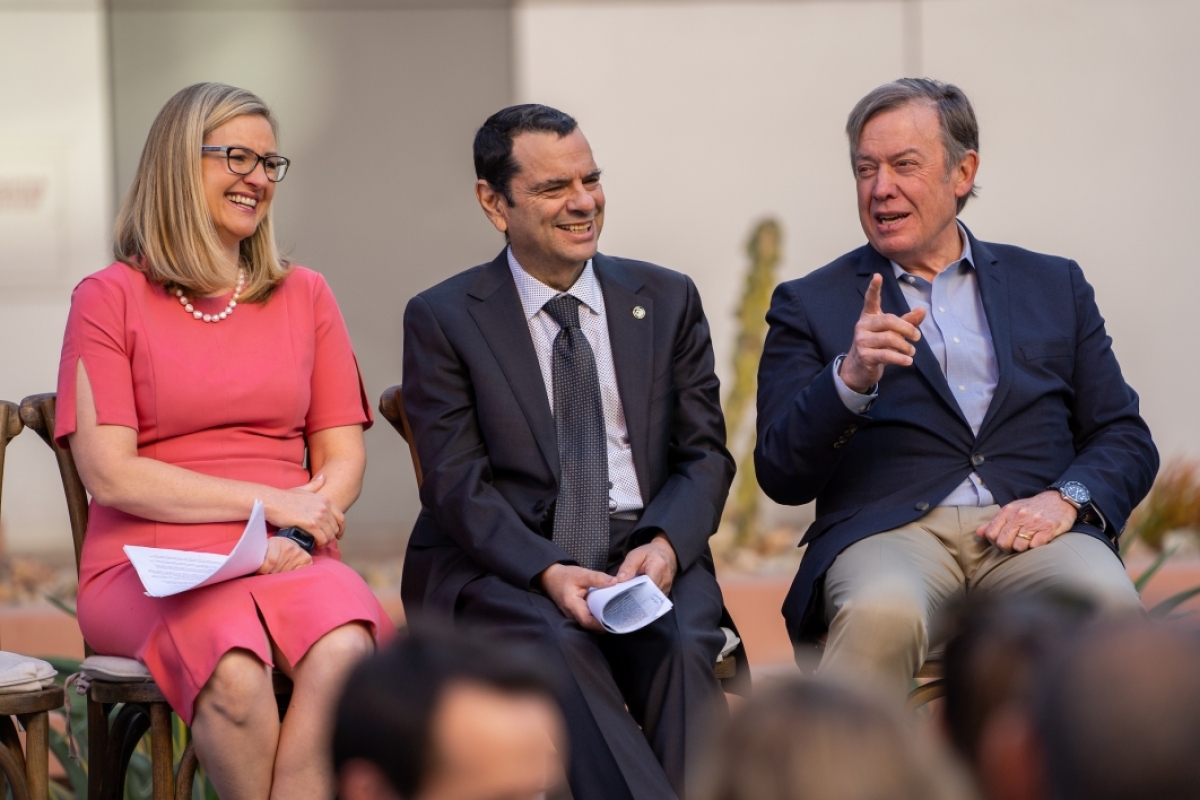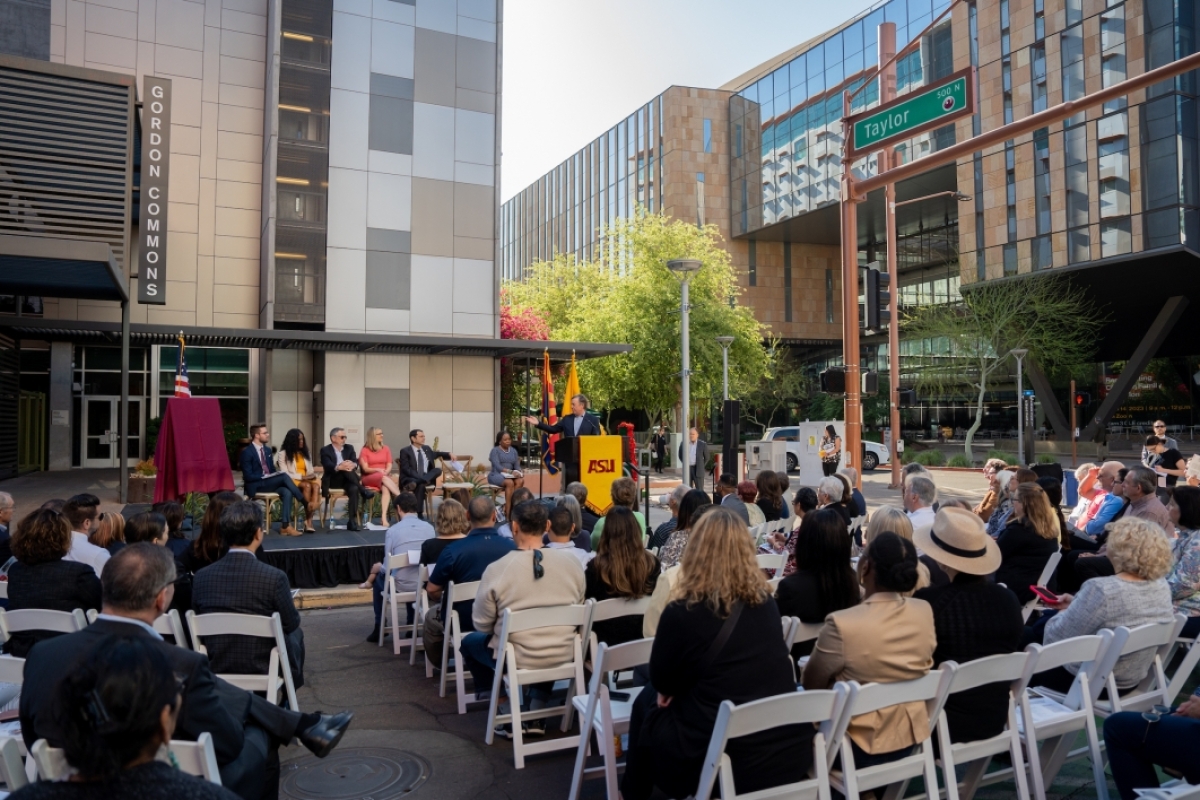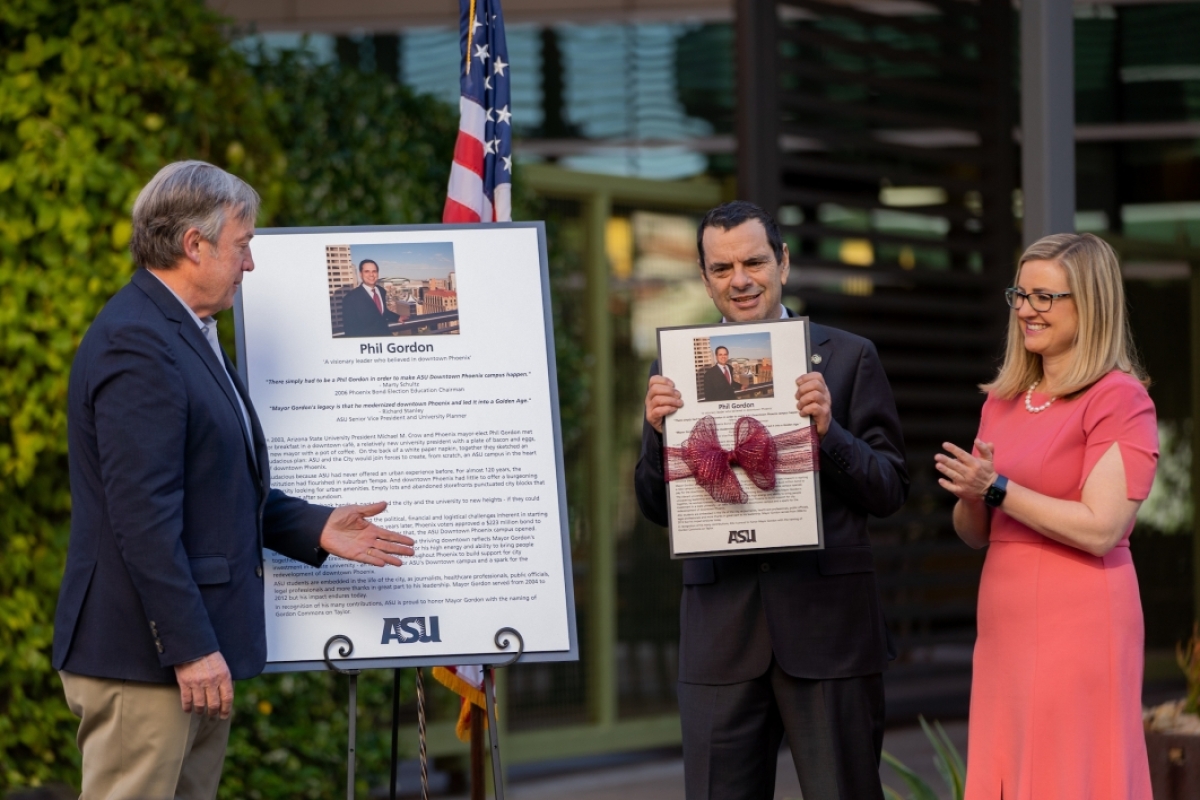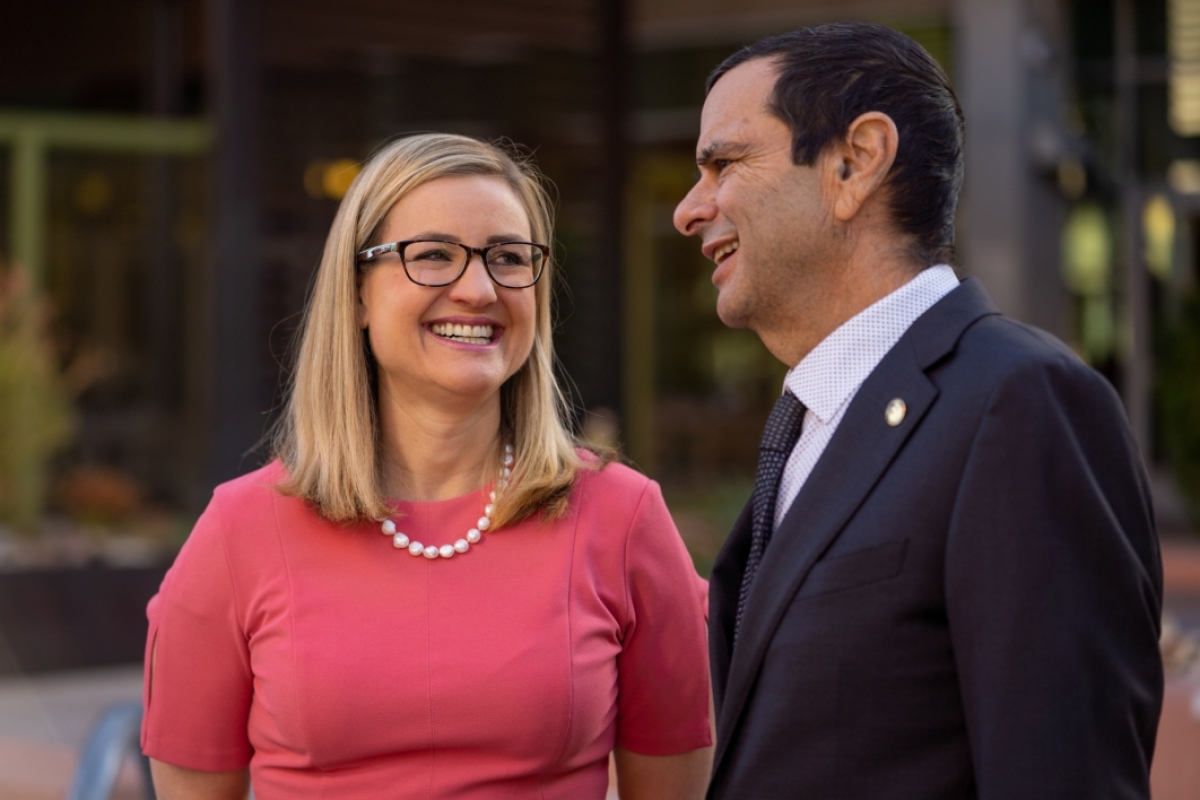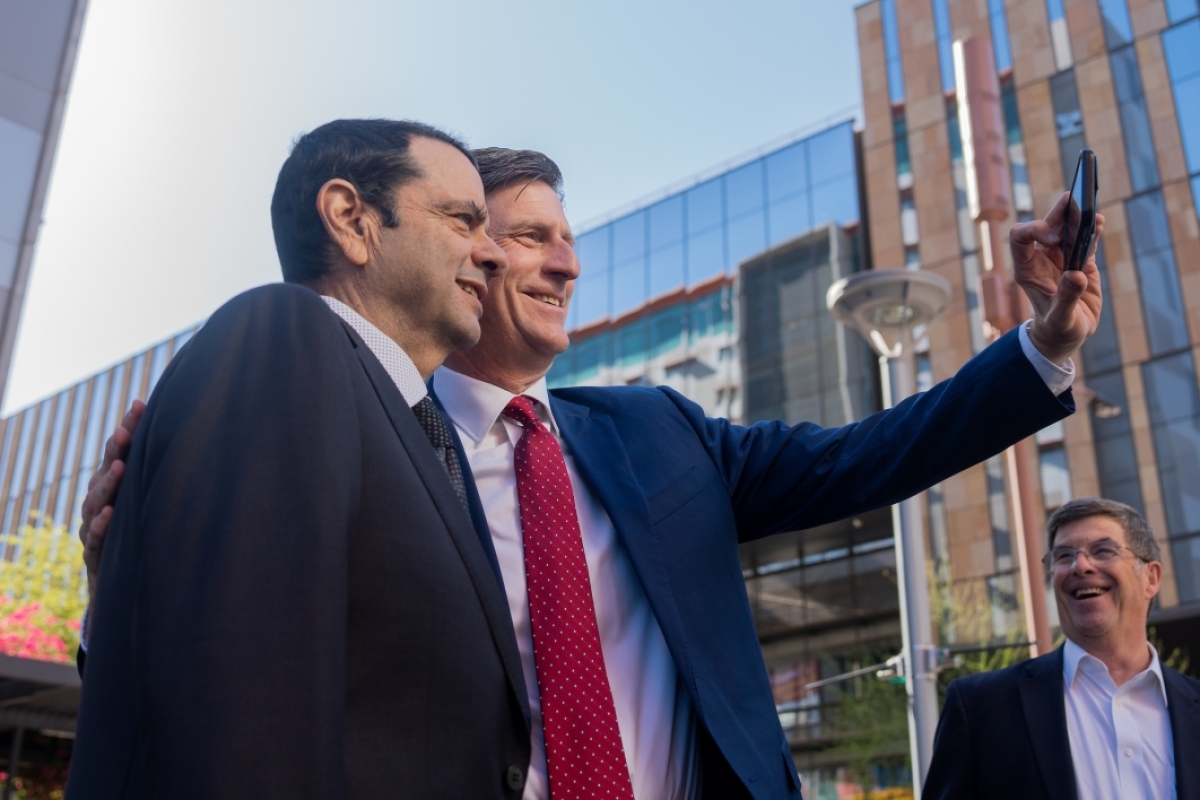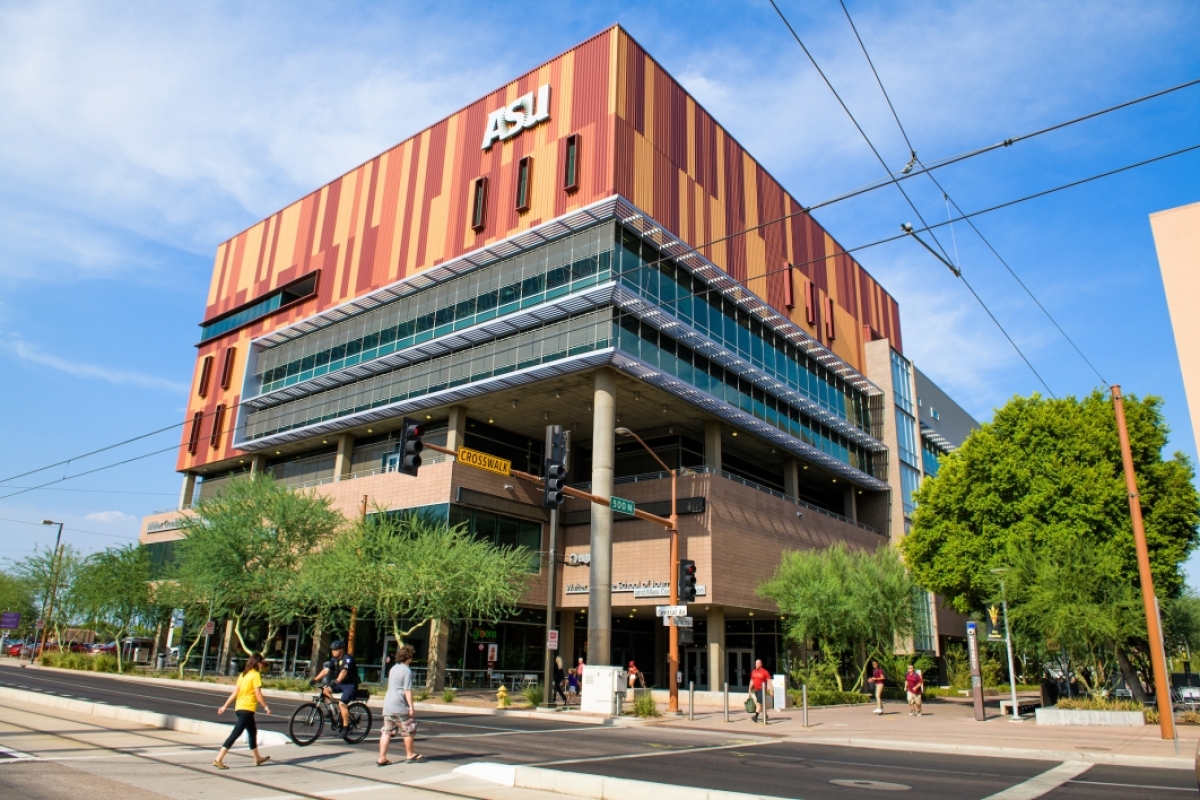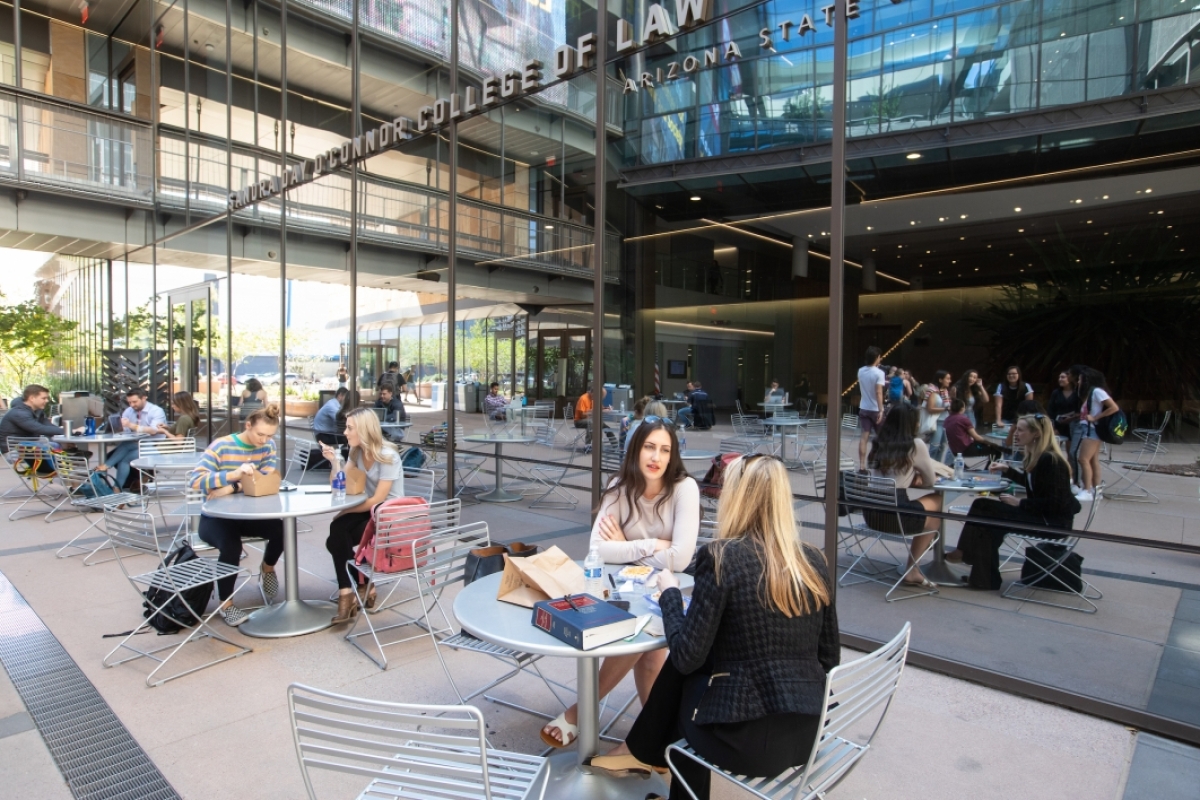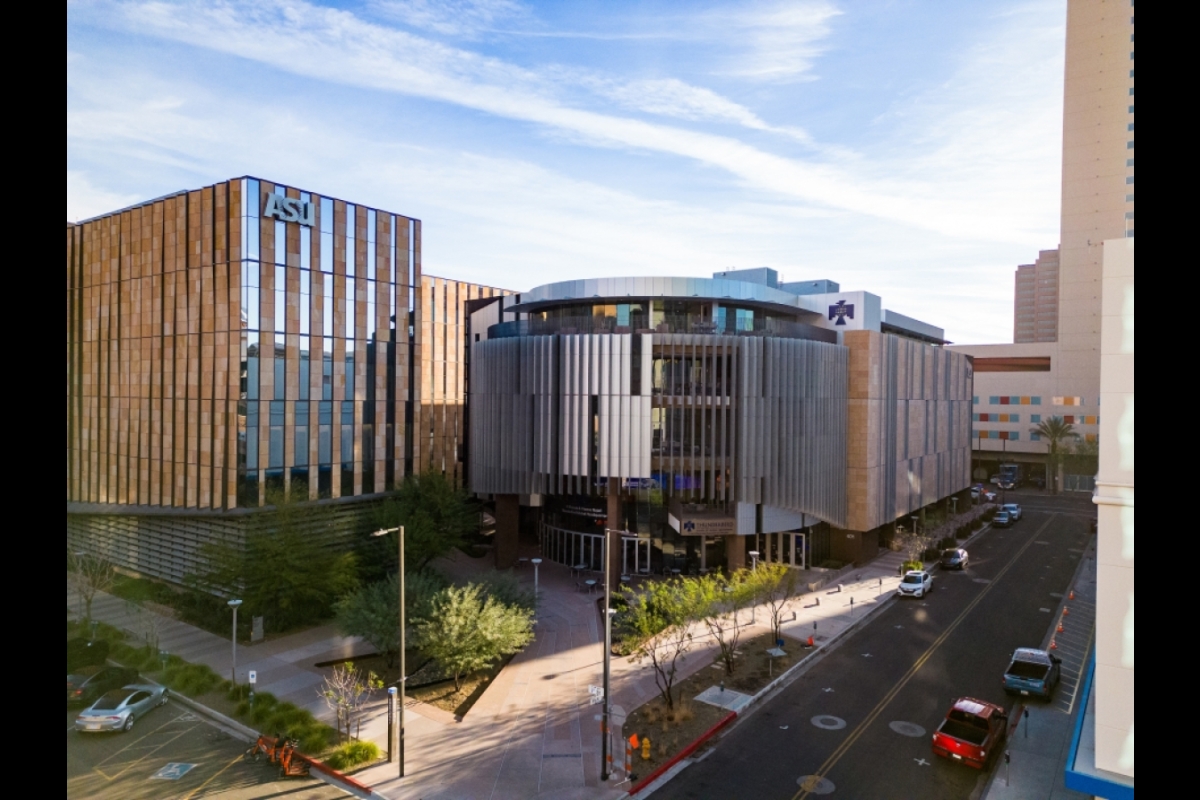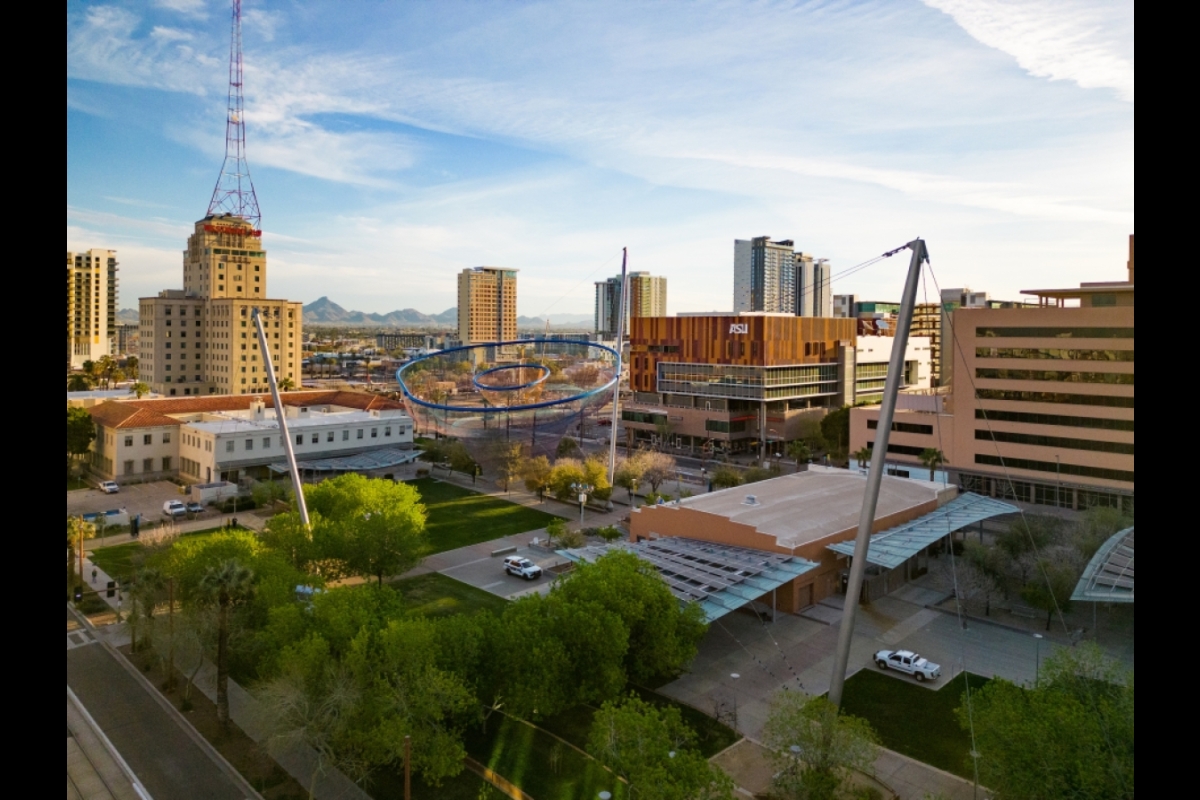ASU residential hall renamed for former Phoenix Mayor Phil Gordon
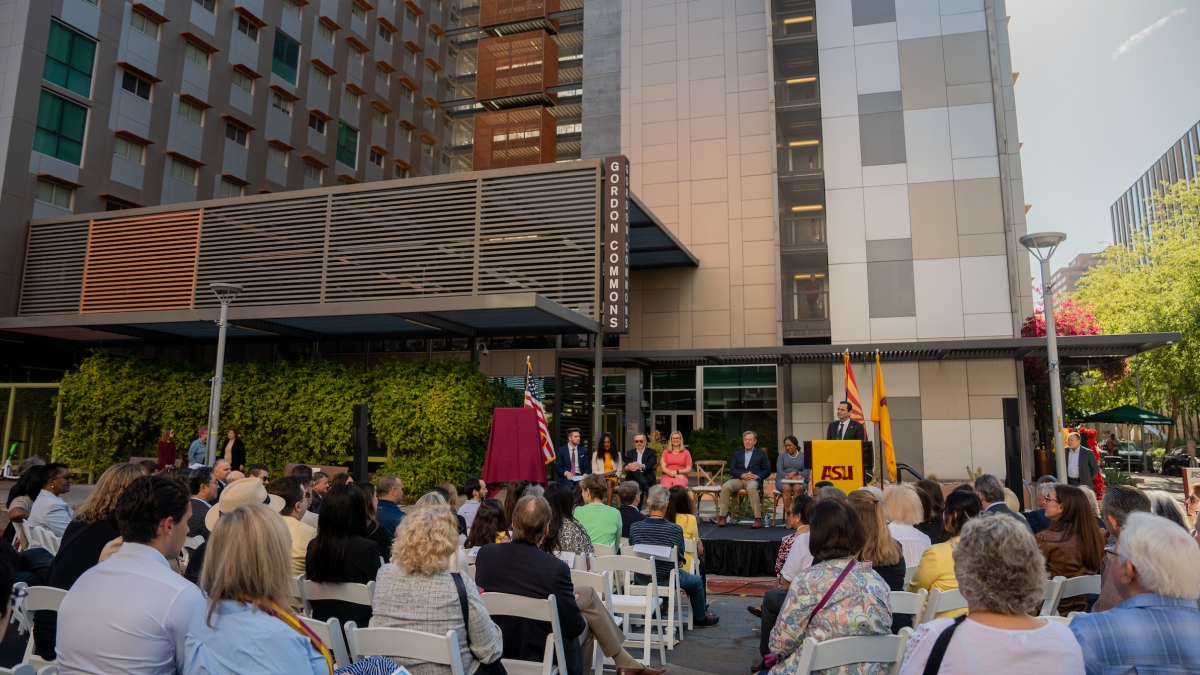
Former Phoenix Mayor Phil Gordon speaks during the Taylor Place renaming ceremony on April 14, 2023. The residential hall was renamed to Gordon Commons in honor of Gordon and his dedication to ASU's Downtown Phoenix campus. Photo by Samantha Chow/Arizona State University
Editor’s note: This story is featured in the 2023 year in review.
Arizona State University has renamed its residence hall on the Downtown Phoenix campus from Taylor Place to Gordon Commons, in honor of former Mayor Phil Gordon, who was a driving force behind the creation of the campus 20 years ago.
At a ceremony on Friday morning that unveiled a new sign and plaque, Gordon thanked the community for taking a big risk on the idea that he and ASU President Michael Crow had first sketched out on the back of a napkin during a breakfast meeting in 2003.
“I’m grateful that you took a risk on an idea that downtown could be revitalized by welcoming ASU into the neighborhood. Or that downtown could be the heart of the city — the government, economic, cultural, business, entertainment and residential heart of the city,” said Gordon, who was mayor of Phoenix from 2004 to 2012. He earned a law degree from ASU in 1978.
“I would say it’s beyond my wildest dreams of what downtown has become, but for those who know me, you know I dreamt big.”
When Gordon and Crow hatched the plan for the campus, they envisioned a complete reimagining of the city’s core, with an ASU hub attracting a creative class of people who would build a knowledge and technology industry.
Crow told the crowd on Friday that as soon as he met Gordon, his first thought was: “Hallelujah! Here is a fighter, a person elected with purpose.
“He wanted to make certain that the world was moving forward in a positive direction. He wanted to make certain that the city could be better and more beautiful than when it was given to him.”
Crow said he and Gordon were focused on one thing: “Could Phoenix, as an emerging city in this unbelievable democracy of the United States – could it be this shining place? Could it be a city where everyone was equal? Could it be a city where economic progress was for everyone? Could it be a place where anyone could have access to a great public university?”
Gordon had pushed the idea of a downtown campus during his campaign, and after he took office in 2004, he and Crow wanted to move at light speed – welcoming students by fall 2006.
In March 2006, Phoenix voters approved a $878.5 million bond for several city upgrades -- homeland security, education, parks, libraries, streets, fire stations and other infrastructure. Of that, $223 million was earmarked for ASU's Downtown Phoenix campus — over a fourth of the total and the largest single proposed bond expenditure. More than 60% of voters approved.
The site would be a full-fledged campus, not a satellite, and in 2006, ASU chose four colleges to relocate there: the Walter Cronkite School of Journalism and Mass Communication; the Watts College of Public Service and Community Solutions; the Edson College of Nursing and Health Innovation; and University College.
Crow told the crowd that the selection of those colleges was not an accident.
“What was designed here with Mayor Gordon was, how do we build a great public service university in the heart of a great democracy in an emerging city?” he said.
In less than six months in 2006, ASU and the city renovated several buildings, purchased equipment and furniture, moved 600 faculty from the Tempe campus and hired 80 new staff members, including the four founding deans.
At Friday’s ceremony, Gordon expressed gratitude toward the first students on the campus, noting that they attended class in temporary classrooms and lived at the old Ramada Inn motel on Second Street while Taylor Place was being built.
“They took a risk, too,” he said.
At the time, Phoenix was the only capital city that didn’t have a university, Gordon told the crowd.
“ASU changed downtown from a desolate and empty place after work and on the weekends to what it is today, the most vibrant part of the city,” he said.
In 2008, the Cronkite building, which also houses one of the country’s largest PBS stations, KAET/Eight, opened, and 2009 saw the unveiling of Civic Space Park, a multiuse space that bridges the city and the university.
Since the campus opened, many other colleges and schools have established a presence downtown, including the Sandra Day O’Connor College of Law and the Thunderbird School of Global Management — both with new buildings — as well as the College of Health Solutions, the Graduate College, the College of Integrative Sciences and Arts, the Mary Lou Fulton Teachers College, the J. Orin Edson Center for Entrepreneurship and Innovation and Barrett, The Honors College.
In 2021, Fusion on First opened, a residence building that also houses ASU's popular music and fashion programs in the Herberger Institute for Design and the Arts.
Gordon said that the campus not only brought new buildings, it helped to preserve historic ones, including the YMCA building, the A.E. England building and the historic post office.
“Today, I’m sure that many of those would only be distant memories if it wasn’t for ASU,” he said.
Phoenix’s downtown has become a major center for health and bioscience research. In 2021, the Wexford Innovation Center opened on the Phoenix Biomedical Campus, which was another collaboration between the city and ASU.
Gordon was instrumental in corralling the support of skeptical business and political leaders in the early years, according to David Krietor, former deputy city manager and Gordon’s chief of staff in 2004.
“Phil was one of a handful of people that intuitively knew that cities, real cities, not suburban places, have been the center of civilization for 3,000 years and that without a vibrant, populated urban core, something in our soul would be missing,” he said, crediting Gordon with changing downtown “from a nice collection of things to an urban place by betting on the power of education.”
Phoenix Mayor Kate Gallego said that Gordon recognized how higher education is key to the future of the community.
“So many of the jobs of the future require at least a bachelor’s degree and perhaps even more,” she said.
She said she’s had two dozen ASU interns work in her office, many of whom have lived at the newly-named Gordon Commons.
“It’s a gorgeous building and a showcase for our city and our downtown,” she said. “It’s been a catalytic investment that’s brought so much private sector investment — we think $7 billion.”
Evan Lis, student body president of the Downtown Phoenix campus and a journalism major, told the crowd that he was impressed by the beauty and conveniences of Taylor Place when he toured.
“Each room had its own bathroom and climate control built in, where you didn’t have to pay to wash your clothes and where the dining hall was just a quick elevator ride away,” he said.
The day he moved in, on the 11th floor, he was captivated by the view.
“We found my roommate, also named Evan and also from the Northeast, and a window with a stunning view of the north Valley featuring Piestewa Peak, the midtown skyline and even glimpses of Camelback.
“This kid from New Jersey couldn’t believe the desert vista in front of him and what he had now.”
Lis said the dorm residents bonded over their shared experiences — “doing homework on the breezeway at sunset and the feeling of community that only a late-night college lounge conversation can create.”
Christiana Sletten, director of residential life, said that ASU has nearly 16,000 students total who live in its learning communities, receiving supportive services and becoming integrated into university life. She said the benefits are proven by data.
“We know that those who reside on campus have higher rates of connection to the university, they’re more likely to persist to graduation, they have higher rates of well-being, and have the opportunity to have further connection to academic faculty supports as well as close proximity to all of the resources available at ASU, from the library to campus experiences, student life and supportive services.”
Former Phoenix Mayor Phil Gordon stands in front of the ASU Downtown Phoenix residence hall that was renamed in his honor on April 14. Photo by Samantha Chow/ASU
Crow said that the renaming of the dorm is a small token of gratitude to Gordon for his vision.
“How do you achieve greater things for the cities that are being evolved in this still emerging democracy? You find politicians who are brave and courageous and relentless,” he said.
As Gordon spoke, construction work at nearby Central Avenue and Fillmore Street, site of a new residential and retail high rise, could be heard.
He gestured toward the campus, where students hurried to class.
“We said that this investment would lead to greater investment. We said it would lead to new businesses, new commercial ventures, new residential opportunities, new high rises,” he said.
“All of that has come true and more.”
More University news

Miki Kittilson appointed dean of ASU's College of Global Futures
Miki Kittilson has been appointed dean of Arizona State University’s College of Global Futures, a unit of the Julie Ann Wrigley Global Futures Laboratory.“As we enter this next phase of…
Graduate College celebrates 2024–25 Outstanding Faculty Mentors
Each year, Arizona State University’s Graduate College celebrates faculty members who have demonstrated an unwavering commitment to mentoring and supporting graduate students and postdoctoral…

ASU's building boom illustrates university's commitment to keep moving forward
To understand how Arizona State University is never settling and constantly improving, look up.At the seven-story student housing complex being built near Mill Avenue in Tempe.At the…


